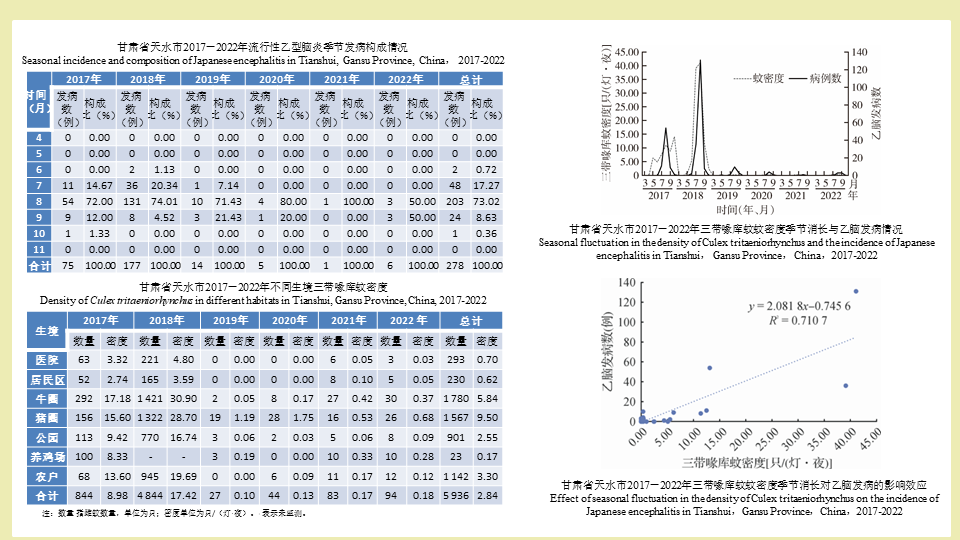 PDF(826 KB)
PDF(826 KB)


2017-2022年甘肃省天水市流行性乙型脑炎发病与蚊媒关系研究
王热勤, 陈秋梅, 张涛, 伦辛畅, 刘水, 马燕东, 管斌, 张斌, 徐刚, 郑亚丽
中国媒介生物学及控制杂志 ›› 2023, Vol. 34 ›› Issue (4) : 523-529.
 PDF(826 KB)
PDF(826 KB)
 PDF(826 KB)
PDF(826 KB)
2017-2022年甘肃省天水市流行性乙型脑炎发病与蚊媒关系研究
 ({{custom_author.role_cn}}), {{javascript:window.custom_author_cn_index++;}}
({{custom_author.role_cn}}), {{javascript:window.custom_author_cn_index++;}}Relationship between Japanese encephalitis and mosquito vectors in Tianshui, Gansu Province, China, 2017-2022
 ({{custom_author.role_en}}), {{javascript:window.custom_author_en_index++;}}
({{custom_author.role_en}}), {{javascript:window.custom_author_en_index++;}}
| {{custom_ref.label}} |
{{custom_citation.content}}
{{custom_citation.annotation}}
|
/
| 〈 |
|
〉 |